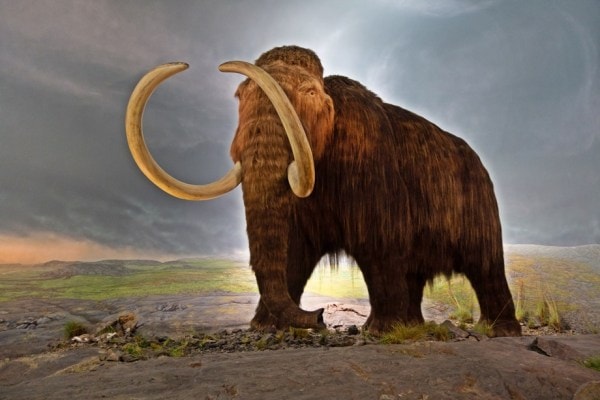In an effort to bring back woolly mammoths, a US-based bioscience company has now announced the birth of “woolly mice”. These mice have been genetically engineered to have several mammoth-like traits geared towards cold tolerance, such as thick, wavy, and golden coats. Scientists at Colossal Biosciences have successfully edited seven genes to demonstrate that they produce the desired colwd resistance traits.
“By engineering multiple cold-tolerant traits from mammoth evolutionary pathways into a living model species, we have proven our ability to recreate complex genetic combinations that took nature millions of years to create. This success brings us a step closer to our goal of bringing back the woolly mammoth,” said Ben Lamm, co-founder and CEO of Colossal Biosciences, in a press release.

The company has shared an unpublished (or preprint) paper describing the research which has not undergone peer review yet.
Notably, some scientists, who were not part of the research, questioned the significance of the creation of woolly mice. Stephan Riesenberg, a genome engineer at the Max Planck Institute for Evolutionary Anthropology (Germany), told Nature, “It’s far away from making a mammoth or a ‘mammoth mouse’… It’s just a mouse that has some special genes.”
How did the scientists create woolly mice?
To create woolly mice, the company’s scientists first looked at genetic variants in which mammoths differed from their closest living relative — the Asian elephant. They then selected 10 gene variants related to hair length, thickness, texture, colour and body fat that corresponded to similar, known variants in a lab mouse.
Beth Shapiro, chief science officer at Colossal Biosciences, told The Indian Express in an email: “We compared the mammoth genomes that we collected using ancient DNA to ask where mammoths are different in their DNA code from elephants, focusing on genes that are linked to traits like coat waviness, hair length. Then we looked for mouse versions of those same genes, and asked whether a mouse had ever been born with a variant in that gene that led to a woolly coat. If so, this gene was added to our list of mouse genes to edit.”
The scientists made eight edits to modify seven genes in the mice. When the genetically modified mice were born, they reflected the traits that the scientists had predicted based on their computational analysis of the mammoth and elephant genetic data.
Story continues below this ad
 A model of a woolly mammoth at the Royal British Columbia Museum, Canada. (Wikimedia Commons)
A model of a woolly mammoth at the Royal British Columbia Museum, Canada. (Wikimedia Commons)
What were the edits made in the mouse gene?
The scientists edited a gene known as FGF5, which targets the cycle of hair growth, creating longer, shaggy hair. This led to the woolly mice gaining the ability to grow three times longer hair than wild type mice. The scientists also edited three other genes related to hair follicle development and structure to create woolly hair texture, wavy coats and curled whiskers.
Other targeted genes include MC1R which recreated the golden coat of a woolly mammoth rather than the black ones of the wild mice.
The woolly mice also contain a truncated version of the FABP2 gene that is associated with lipid metabolism and fatty acid absorption in the woolly mammoth. This leads to changes in the body weight of the mice. Shapiro said, “Over the next year, we will be performing standard experiments on the [woolly] mice to explore whether these changes to their DNA make them more adapted to cold climates.”
Why has the company called this a milestone?
According to the company, the birth of woolly mice demonstrates that it is possible to edit specific genes to express the desired physical traits based on information gathered through computational analysis of the genetic data of an extinct animal.
Story continues below this ad
The company has also created a system for testing hypotheses between a specific gene and the physical traits it leads to. The birth of woolly mice creates a living model for studying cold-climate adaptations as well. Most importantly, according to Colossal Biosciences, it may help in biodiversity conservation.
“Gene editing is a new approach to biodiversity conservation and de-extinction… we need to be building new tools that can be used to save species from becoming extinct, and gene editing should be one of those tools,” said Shapiro.
Why have some scientists expressed concerns about the research?
Riesenberg told Nature that making eight changes to an organism’s genome, which the scientists of Colossal Biosciences did, is quite common in genetic engineering.
Moreover, scientists like Robin Lovell-Badge, head of the Stem Cell Biology and Developmental Genetics Laboratory at The Francis Crick Institute in London, have raised some gaps in the Colossal Biosciences’ unpublished paper.
Story continues below this ad
Lovell-Badge told CNN, “My biggest problem with the paper is that there is nothing addressing whether the modified mice are cold-tolerant — through introducing traits that are apparent in mammoths — which is the justification given for carrying out the work.”
Others have questioned if reviving the woolly mammoth is even helpful for conservation.
Christopher Preston, a wildlife and environment expert at the University of Montana, told the Associated Press, “You’re not actually resurrecting anything — you’re not bringing back the ancient past… You might be able to alter the hair pattern of an Asian elephant or adapt it to the cold, but it’s not bringing back a woolly mammoth. It’s changing an Asian elephant.”



 A model of a woolly mammoth at the Royal British Columbia Museum, Canada. (Wikimedia Commons)
A model of a woolly mammoth at the Royal British Columbia Museum, Canada. (Wikimedia Commons)




































